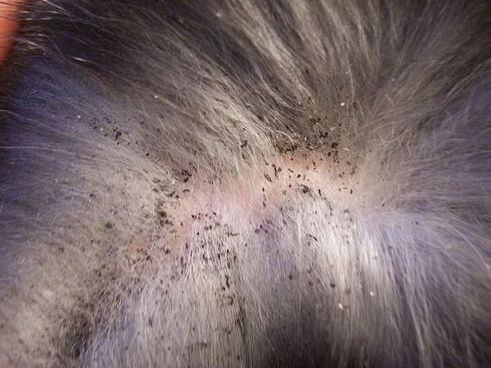Introduction

Welcome to our comprehensive guide on a pressing concern for many cat owners: Can indoor cats get fleas? It’s a common belief that indoor cats are immune to flea infestations. This misconception leads many to overlook necessary preventive measures. In this article, we’re setting the record straight. We’ll dive into the realities of flea risks for indoor cats, covering everything from flea biology to effective prevention and treatment strategies. Our aim is to arm you with the knowledge needed to protect your feline friend. Whether you’re a seasoned cat owner or new to the world of pet care, this guide is an essential read. Let’s unravel the truth about fleas and indoor cats together, ensuring your furry companion stays happy and healthy.
Learn more about flea infestations in pets.
Understanding Fleas: Basics and Behavior
What are Fleas?
Fleas are tiny, wingless parasites that survive by consuming the blood of their hosts. Despite their small size, they can cause significant discomfort and health problems for pets. Fleas are known for their remarkable jumping ability, making it easy for them to move between hosts and environments. Their resilience and adaptability make them a persistent issue for pet owners.
Lifecycle of Fleas
The lifecycle of a flea is a complex process involving several stages: eggs, larvae, pupae, and adults. Each stage presents unique challenges in terms of control and prevention. Flea eggs are laid on the host but can quickly spread throughout the home. The larvae then develop in hidden, undisturbed places like carpets or cracks in the floor. Understanding this lifecycle is crucial in effectively targeting and eliminating flea infestations.
How do Fleas Survive and Thrive?
Fleas thrive in warm, humid environments and can survive for months without a host. They prefer areas that are undisturbed and offer protection, such as animal bedding, carpets, and upholstery. Their ability to survive in various environments underscores the importance of comprehensive flea control strategies, both on your pet and in your living space.
Discover more about the life cycle and habits of fleas.
The Reality of Fleas in Indoor Environments
Debunking the Myth: Can Indoor Cats Get Fleas?
Contrary to popular belief, indoor cats are not immune to flea infestations. Fleas can easily hitch a ride into your home on clothing, other pets, or even objects like bags. Once inside, they find a hospitable environment in your pet’s warm fur. Recognizing that indoor cats are at risk is the first step in effective flea prevention and control.
Common Ways Fleas Can Infest Indoor Spaces
Fleas can infiltrate indoor spaces in numerous ways. They might enter through open windows or doors, be brought in by other pets, or even come in on your own shoes or clothing. Understanding these common entry points helps in developing strategies to minimize the risk of flea invasion in your home.
The Role of Human Activities in Bringing Fleas Indoors
Human activities play a significant role in introducing fleas to indoor environments. Visiting places where infested animals have been, like parks or veterinary clinics, can inadvertently bring fleas into your home. Being aware of these activities and taking preventive measures can greatly reduce the risk of flea infestations in indoor cats.
Learn about indoor flea control from the American Veterinary Medical Association (AVMA).
Identifying Flea Infestations in Indoor Cats
Signs of Flea Infestation in Cats

Recognizing a flea infestation early is key to effective treatment. Common signs in cats include excessive scratching, biting, or licking of the fur, and visible red bumps or loss of hair. Another telltale sign is the presence of flea dirt – small black specks that turn red-brown when wet – in their coat or bedding. Observing these signs can prompt timely action to address the infestation.
Examining Your Cat for Fleas: Step-by-Step Guide
Regularly examining your cat for fleas is a crucial preventive measure. Start by using a flea comb over your cat’s coat, paying special attention to the neck and base of the tail. Fleas or flea dirt caught in the comb indicate an infestation. This routine check helps in early detection and treatment, ensuring the health and comfort of your indoor cat.
Importance of Regular Veterinary Check-Ups
Regular veterinary check-ups are vital in maintaining your cat’s health and in early detection of fleas. Your vet can offer professional advice on flea prevention and treatment options tailored to your cat’s specific needs. These check-ups also provide an opportunity to address any flea-related health issues, such as allergic reactions or tapeworms.
Find more on flea detection and health impacts from the Cornell University College of Veterinary Medicine.
Preventive Measures Against Fleas for Indoor Cats
Flea Prevention Strategies
Preventing flea infestations is more effective and less stressful than treating them. Key strategies include regular grooming of your cat, using vet-recommended flea treatments, and maintaining a clean living environment. Regular grooming helps to catch fleas early, while flea treatments act as a barrier against infestations. Keeping your home clean and vacuuming frequently reduces the likelihood of fleas surviving in carpets and upholstery.
Recommended Flea Prevention Products for Indoor Cats
A range of flea prevention products is available for indoor cats, including topical treatments, flea collars, and oral medications. It’s important to choose a product suitable for your cat’s age, weight, and health condition. Consult your veterinarian to find the most effective and safe option for your cat.
Tips for Maintaining a Flea-Free Home
Maintaining a flea-free home involves regular cleaning and vacuuming, especially in areas where your cat spends a lot of time. Washing your cat’s bedding regularly and keeping your home’s humidity levels low can also deter flea infestations. Consider using flea sprays or powders designed for home use, ensuring they are safe for pets.
Explore more on flea prevention for pets and homes from the American Society for the Prevention of Cruelty to Animals (ASPCA).
Treating Flea Infestations in Indoor Cats
Immediate Steps to Take When You Detect Fleas on Your Indoor Cat
If you discover fleas on your indoor cat, prompt action is essential. Start by using a flea comb to remove as many fleas as possible. Next, bathe your cat with a mild, cat-safe flea shampoo. Remember, the goal is to reduce the immediate flea burden on your pet while minimizing stress.
Overview of Effective Flea Treatments
There are several effective flea treatment options available for indoor cats. These include topical spot-on treatments, oral flea medications, and flea collars. Each treatment has its own advantages and suitability depending on the severity of the infestation and your cat’s health. Always consult with your veterinarian to select the most appropriate treatment for your cat.
Importance of Treating the Living Environment Alongside the Pet
Treating your cat for fleas is just one part of the solution. It’s equally important to treat your living environment to eliminate fleas and prevent reinfestation. This includes thorough cleaning, vacuuming, and the use of environmental flea control products like sprays or powders. Ensure these products are safe for use around pets.
Read more about effective flea treatment strategies for pets and homes from the Companion Animal Parasite Council (CAPC).
Conclusion
Recap of the Importance of Flea Prevention and Treatment for Indoor Cats
In summary, understanding that indoor cats are susceptible to flea infestations is crucial. We’ve explored the lifecycle of fleas, ways they can infest indoor spaces, and signs of infestation in cats. Emphasizing preventive measures and immediate treatment options can ensure your indoor cat remains healthy and flea-free.
Encouragement to Stay Vigilant and Proactive in Flea Control
Staying vigilant and proactive is key in the battle against fleas. Regular grooming, vet visits, and maintaining a clean home environment are essential practices. Remember, prevention is always better than cure when it comes to fleas.
Closing Thoughts and an Invitation for Readers to Share Their Experiences or Questions
We hope this guide has been informative and helpful. Flea control is a continuous process, and we encourage you to share your experiences or questions in the comments. Your insights can help others in our community. Together, we can ensure a comfortable, flea-free life for our indoor cats.